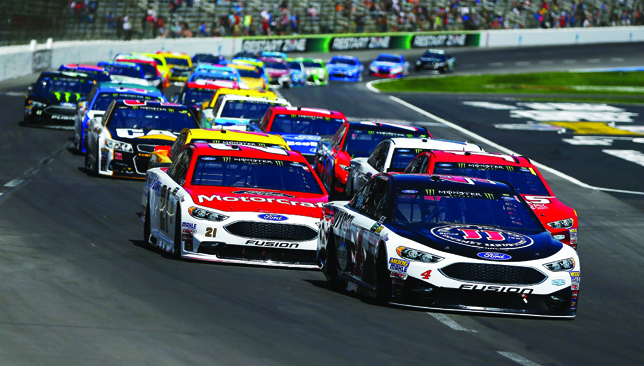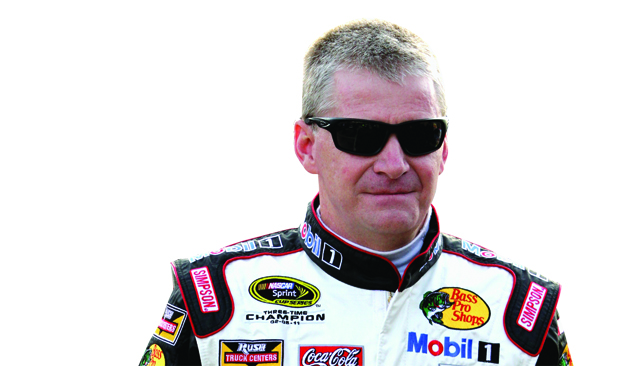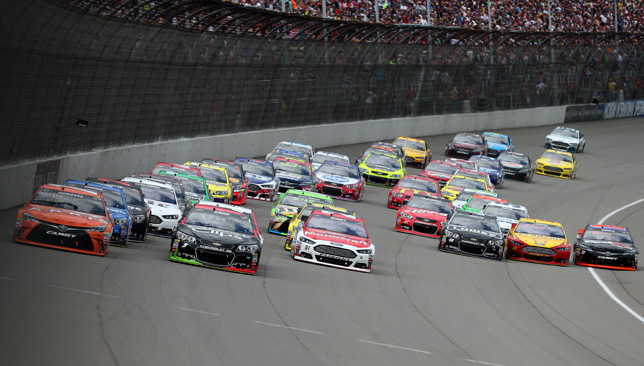
Jeff Burton isn’t the kind of man to sugarcoat a problem.
The NASCAR legend has been in the game long enough to know when difficulties lie ahead.
Yet the man known as ‘The Mayor’ has always been a fighter – and that’s why when it comes to talking about his beloved sport’s future, the tone is bullish.
In an ever changing world where action is consumed on myriad platforms in countless ways, stock car racing couldn’t stand still. Evolution is crucial and with widespread changes being implemented this season, eyebrows have been raised while the same questions are asked.
Is this just another desperate attempt to douse trouble?
Some of the bare facts make uneasy reading. Last season saw a 7% drop in TV viewers with some of the lowest figures seen since 2001. Attendance figures at the track haven’t been released since 2012. No wonder considering crowds at some races last season, especially the Brickyard 400, were said to be the lowest ever. (250,000 attended Brickyard in 1994, compared to around 50,000 last year.)
More strikingly, when long term sponsor US telecom company Sprint announced in 2014 that their 10 year association with the sport would come to an end in 2016, there was a serious overvaluation which has cost millions.
Mooted deals with the likes of Microsoft never came to fruition and despite energy drinks company Monster jumping onboard to bring a new brand awareness, their deal was worth around $30 million LESS than the mobile phone operator’s $50 million a year agreement.
Furthermore, places on the grid have also become cheaper. Hopes of selling team spots for upwards of $10 million have been crushed with some going for around $2 million to $4 million.

Jeff Burton has 21 NASCAR race wins.
“All these costs have become less expensive because everyone knows the sport isn’t as popular as it used to be,” said a well-placed source.
NASCAR bosses, however, have acted decisively.
A new format has torn up the traditional 500 mile race and will now break it into three segments, with points awarded to the top finishers of each stage in addition to the race winners. Extra points are dished out for winning stages, races and finishing the season in the top 16.
It’s a bold, brave move yet one which will encourage drivers to think – and drive – differently.
Legends like Tony Stewart aren’t around anymore – another cause for worry – but those in power are comforted by a massive decade long, $8.2billion TV package.
It’s hardly crisis time. (NASCAR still posted a weekly average of 4.6million viewers last season despite the drop in numbers.) Just like every other sport in the world, however, they are simply being forced to stay relevant and keep the customers happy – and excited.
“No-one should be in denial and say that NASCAR is as healthy as it ever has been – because it’s not,” Burton, who now works for NBC as an analyst, told Sport360.
“We don’t have the same numbers of people watching today as we did 10 years ago. But with these changes and evolution, the future remains bright. Reports of a demise have been exaggerated.”
With F1 now under new American ownership, there is sure to be a serious motorsport push stateside. NASCAR doesn’t fear Lewis Hamilton snaring any disenchanted petrol heads, especially with no star American drivers leading the charge in Grand Prix.
“I look at F1, they are part of the sports entertainment landscape who have a presence in the US and with our own ownership groups with Gene Haas involved,” said NASCAR’s Senior VP of Race Operations Jim Cassidy.
“But I like to think of it from a motorsport standpoint, if they are doing well that’s good news for everyone.”
The size of the NASCAR fan base is not in doubt – it’s the product on the track which needed a tweak.
“Look at the stands and the millions watching at home,” continued Burton. “Racing is still popular.”
Thus far, the format changes have gone down a storm.
In the past too many races faded into insignificance thanks to the leading drivers having already secured their spots in the end of season Chase with wins. Now, though, points are on offer in each of the three segments which stay with them right into the play-offs and through to the final race at Homestead. Every lap of every race now means something.

Action from the NASCAR Sprint Cup Series Quicken Loans 400.
“We went into the playoffs last year, broke an engine and we were out”, lamented Furniture Row team boss Joe Garone.
“If we would have had those bonus points, we would have been okay. It would have acted as a reward for the consistency shown throughout the season. The new system makes the race throughout the whole event more exciting and valuable to the team because you carry those points into the play-offs.”
“The low downforce packages the cars have on them have also created a different type of racing. The cars move and slide around more. The race is put a little more back into the drivers’ hands.”
It’s a necessary move away from tradition but NASCAR fans, certainly those of a certain vintage, love the old days. Living in the past, however, can be dangerous. And with Monster now on board, a new era dawns. With their young demographic gorging on the razzmatazz of UFC, motocross and drag racing, race bosses are hoping for a serious injection of freshness and fun.
“It (Monster) is built on girls, parties and motorsports,” said Monster’s Mitch Covington.
That may sound like anathema for older fans. Yet no matter. A new vibrancy will be filtered in even if the financials paint a picture of belt adjusting.
Yet, in time, there’s hope Monster’s runaway success elsewhere – their net sales in 2015 totaled $2.7billion with a presence in 120 countries – will give racing the kind of jolt their drinks give to millions.
“They are growing and will continue to grow”, said Cassidy. “They are a brand that is on the side of being a maverick and resonate with our core fans. Monster love racing and bringing the following they do, it couldn’t have been a better match.”
But have Monster inherited a product which can fuel the excitement of their customers?
“We are pretty excited about what we have seen so far with the stage racing”, added Cassidy. “Every single lap of every race means just that little bit more and that is being translated onto the track. There are more storylines, more urgency, more moments.”
Analysing TV figures in today’s multi-media climate can temporarily blur reality.
The NFL, the undisputed sporting king of the US, suffered a slide in ratings last season, an even larger drop than NASCAR.
“2017 is all about stopping the bleeding by getting the people who are watching to want to watch it more”, concluded Burton. “The TV decline has stopped, the attendances have improved. There has been an upward trend. But this won’t all change overnight. It will take years.”
“We tend to glorify the past but it’s a different world now. The reality is we can’t go back. It has to be better than before.”